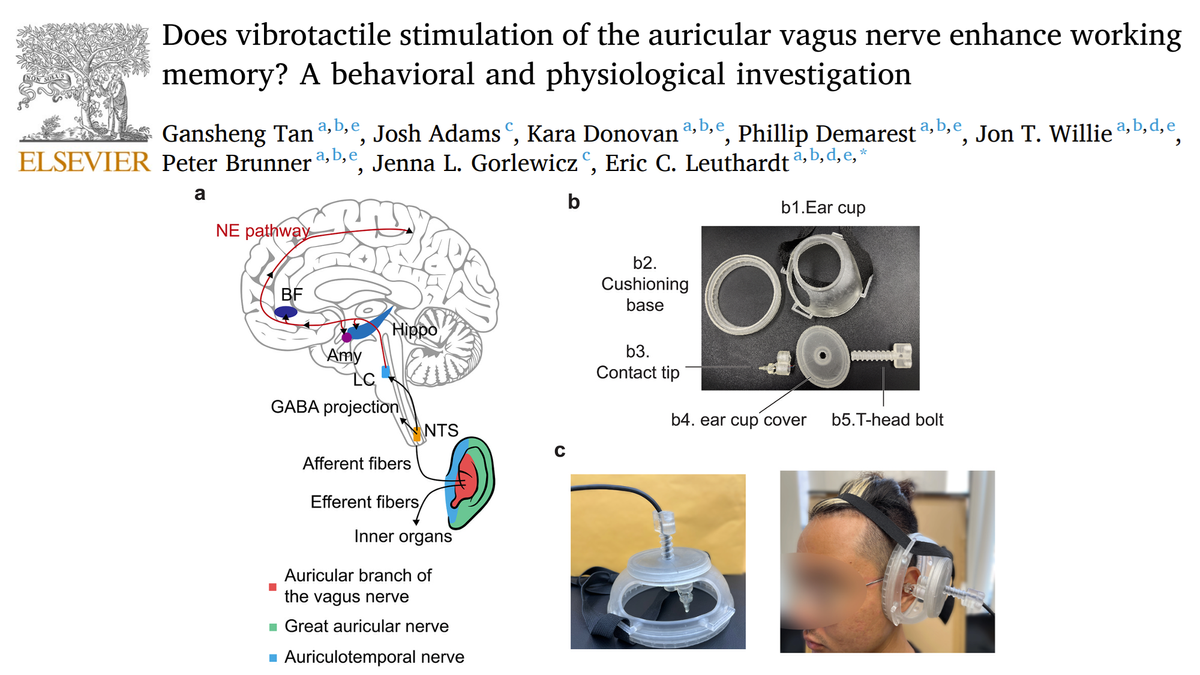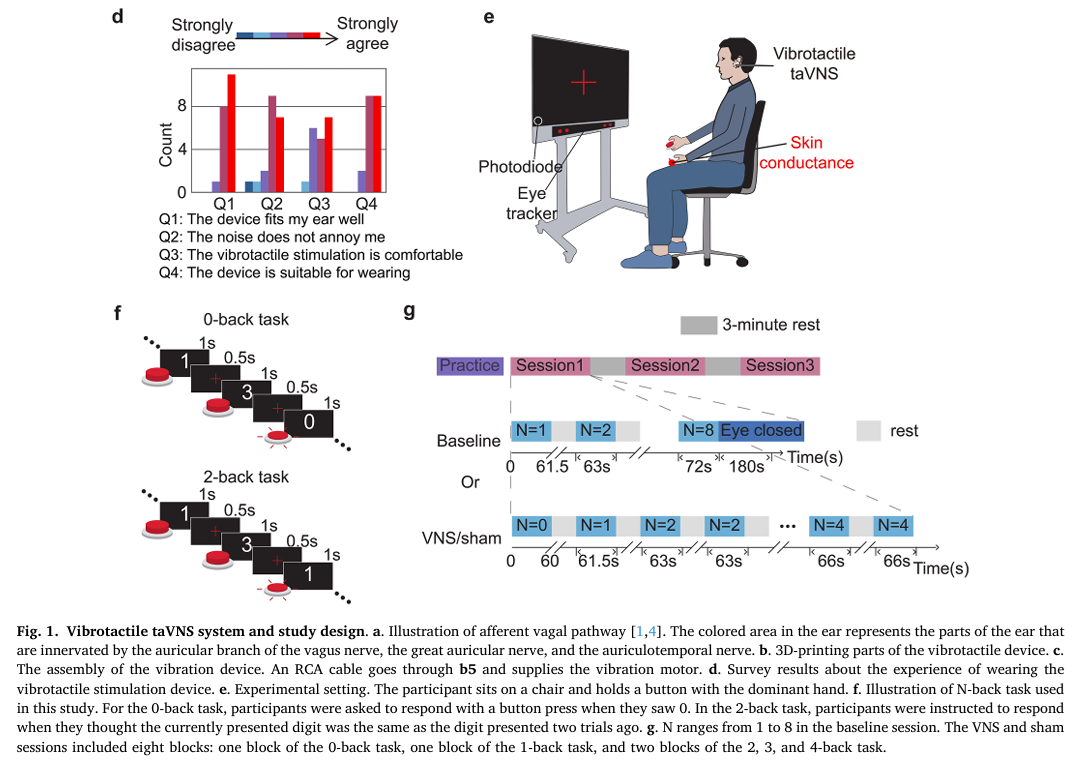Does vibrotactile Vagus Nerve Stimulation enhace memory?

It was a pleasure to support Gansheng Tan's investigation of the effect of Vibrotactile Nerve Stimulation on working memory with a custom designed and additively manufactured wearable device. We worked together to iteratively develop and test the device to deliver isolated vibration to the cymba concha of the ear and a sham location on the earlobe until it was ready for his trial at the Leuthardt Lab at Washington University.
Feel free to read the abstract of the findings, or the full paper published in the Journal Brain Stimulation (linked below).
ABSTRACT
Background: Working memory is essential to a wide range of cognitive functions and activities. Transcutaneous auricular vagus nerve stimulation (taVNS) is a promising method to improve working memory performance. However, the feasibility and scalability of electrical stimulation are constrained by several limitations, such as auricular discomfort and inconsistent electrical contact.
Objective: We aimed to develop a novel and practical method, vibrotactile taVNS, to improve working memory. Further, we investigated its effects on arousal, measured by skin conductance and pupil diameter.
Method: This study included 20 healthy participants. Behavioral response, skin conductance, and eye tracking data were concurrently recorded while the participants performed N-back tasks under three conditions: vibrotactile taVNS delivered to the cymba concha, earlobe (sham control), and no stimulation (baseline control).

Results: In 4-back tasks, which demand maximal working memory capacity, active vibrotactile taVNS significantly improved the performance metric d′ compared to the baseline but not to the sham. Moreover, we found that the reduction rate of d′ with increasing task difficulty was significantly smaller during vibrotactile taVNS sessions than in both baseline and sham conditions. Arousal, measured as skin conductance and pupil diameter, declined over the course of the tasks. Vibrotactile taVNS rescued this arousal decline, leading to arousal levels corresponding to optimal working memory levels. Moreover, pupil diameter and skin conductance level were higher during high-cognitive-load tasks when vibrotactile taVNS was delivered to the concha compared to baseline and sham.
Conclusion: Our findings suggest that vibrotactile taVNS modulates the arousal pathway and could be a potential intervention for enhancing working memory.